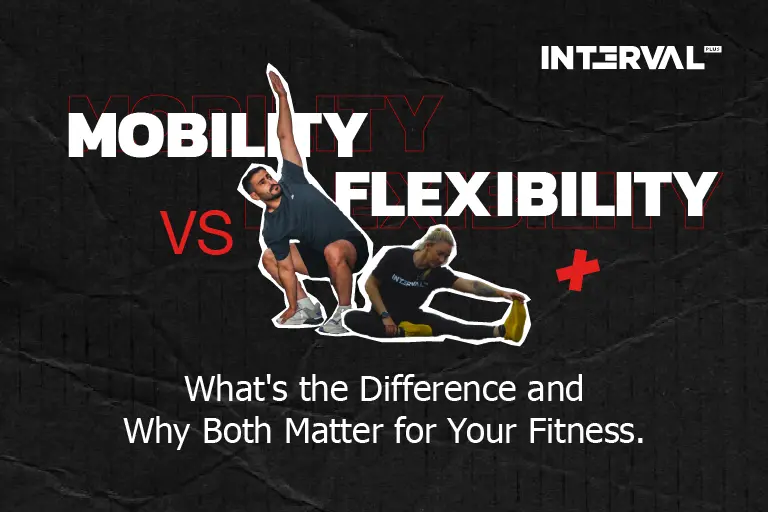When it comes to fitness, terms like “mobility” and “stretching” are often used interchangeably. But while both are essential to your fitness and movement quality, they play very different roles. In this article, we’ll explore the differences between mobility and stretching, how each impacts your body, and why a balanced approach can take your training at Interval Plus to the next level.
What is Stretching?
Stretching is the deliberate lengthening of a muscle to improve its flexibility. There are various types of stretching—static, dynamic, ballistic—and each type serves different purposes depending on your fitness goals.
- Static stretching involves holding a stretch position, which can increase muscle length and joint range of motion.
- Dynamic stretching uses active movement to prepare muscles for the workout ahead.
Incorporating regular stretching into your routine helps improve flexibility, which can enhance your performance and lower the risk of injuries. However, flexibility alone doesn’t always ensure effective movement in strength training and functional fitness. That’s where mobility comes into play.
What is Mobility?
Mobility, on the other hand, refers to the body’s ability to move actively through a full range of motion, combining flexibility with strength and control. It focuses on joint health and requires a balance of muscle strength, stability, and flexibility.
Mobility work is particularly essential for functional fitness. For example, a movement like the squat requires hip, knee, and ankle mobility to execute effectively and safely. By focusing on mobility, you can improve your performance in dynamic exercises, prevent injuries, and help your body handle the intensity of Interval Plus workouts.
Why You Need Both Mobility and Stretching for Optimal Fitness
For a well-rounded fitness program, both mobility and stretching should be part of your routine. Here’s why:
- Injury Prevention: Both mobility and flexibility play a role in keeping your body ready for the demands of training.
- Improved Performance: Greater mobility allows for more efficient and powerful movement, while flexibility provides the range needed for optimal muscle activation.
- Better Recovery: Stretching aids in muscle recovery, while mobility work helps prevent stiffness and enhances joint health for smoother movements in future workouts.
When you train at Interval Plus, we combine flexibility and mobility in every WOD, which will elevate your performance, whether it’s strength training, cardio, or skill-based movements like handstands and muscle-ups.
Practical Tips for Integrating Mobility and Stretching into Your Routine
- Start Your Workout with Dynamic Mobility Exercises: Use active movements to open up joints and prepare your body for action.
- Use Static Stretching After Workouts: This can help reduce muscle tension and improve flexibility over time.
- Dedicate a Few Minutes Each Day to Mobility: Even 5-10 minutes of focused mobility drills, such as hip openers or shoulder rotations, can make a big difference.
Ready to Improve Your Movement?
Mobility and flexibility are the unsung heroes of athletic performance. Start incorporating both into your training for better results, reduced injury risk, and a more powerful workout experience. Try a class on us and discover how a focus on movement can level up your fitness! Sign up for a free trial today!


